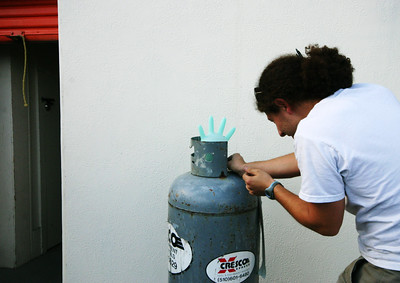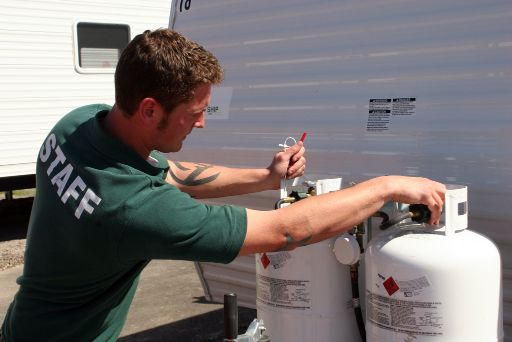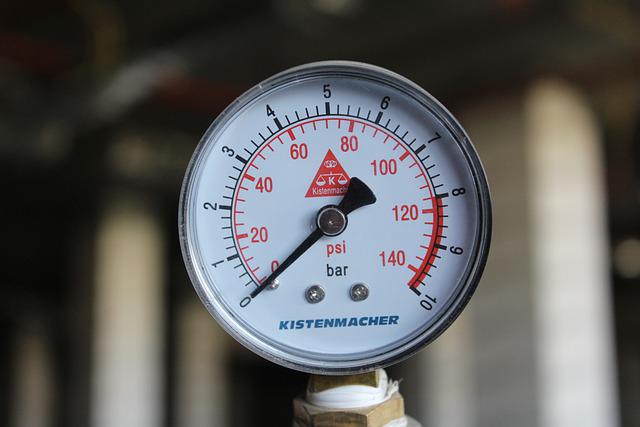
Connecting and disconnecting a propane tank to an appliance can be done safely and easily if you follow some basic best practices. Propane is a highly flammable gas, so it’s essential to take proper precautions to prevent gas leaks and other safety hazards. Here are some more detailed guidelines for connecting and disconnecting propane tanks to appliances:
- Always turn off the gas supply valve on the propane tank before connecting or disconnecting it to the appliance. This will prevent the gas from escaping while you’re working on the connections.
- Before connecting the propane tank, inspect the tank and appliance connections for damage or wear. Look for cracks, dents, or signs of corrosion that could indicate a potential gas leak. If you notice any damage, do not connect the tank to the appliance. Instead, repair or replace the damaged part before using the appliance.
- Use a propane gas leak detector or soapy water to check for leaks once the tank is connected. Apply the soapy water to the connections with a brush or spray bottle and watch for bubbles. If you see bubbles forming, that indicates a leak, and you should turn off the gas and repair or replace the damaged part.
- Tighten the connections by hand first, then use a wrench to secure them tightly. Over-tightening can damage the fittings or cause gas leaks. Be sure to use the right size wrench for the job, and don’t force the connections to tighten further than necessary.
- Follow the manufacturer’s instructions for connecting the propane tank to the appliance. Different appliances may require different connection methods or tools, so it’s important to read and follow the instructions carefully. Make sure you’re using the right type of connection fitting and hose for your appliance, and that you’re connecting the parts in the right order.
- Store the propane tank and appliance in a well-ventilated area away from heat sources, flames, or sparks. This will prevent gas buildup and reduce the risk of fire or explosion. Make sure the tank and appliance are stored in a secure location where they won’t be knocked over or damaged.
- When it’s time to disconnect the propane tank, turn off the gas supply valve first and then disconnect the tank from the appliance. Make sure you’re wearing gloves and other protective gear to prevent burns or injuries. Store the tank upright and in a safe, secure location away from heat and flames.
By following these best practices, you can ensure that your propane tank and appliance are connected and disconnected safely and securely. It’s important to take the time to inspect and maintain your propane tank and appliance regularly to prevent gas leaks and other safety hazards. If you’re unsure about how to connect or disconnect your propane tank, consult the manufacturer’s instructions or contact a qualified propane technician for assistance.
Preparation Before Connection
- Ensure the Area is Well-Ventilated: Propane is heavier than air, so in the event of a leak, it will settle at ground level. Ensuring good ventilation can prevent the buildup of propane, reducing the risk of ignition.
- Check the Tank’s Expiration Date: Propane tanks typically last 10-12 years from their manufacturing date. Using expired tanks increases the risk of leaks due to potential corrosion or wear. Always verify the date before use. Recertification may require.
- Examine Tank and Appliance Connectors: Before connection, inspect connectors for wear, tear, or damage. Damaged connectors can lead to leaks or inefficient gas flow.
Connecting the Propane Tank
- Selecting the Right Connector: Connectors come in different types, including POL, ACME, and Type 1. Ensure you’re using the appropriate connector for your appliance and tank.
- Application of Propane-Rated Thread Sealant: Not all sealants are created equal. Use a sealant specifically rated for propane to ensure a leak-proof connection.
- Proper Alignment of Connectors: Misalignment can cause cross-threading or incomplete seals. Always ensure a straight connection, tightening firmly but not overly so.
Safety Checks Post Connection
- Leak Detection Tests: A simple method involves applying soapy water to the connection point. Bubbles forming indicate a leak. Commercial leak detectors can also be used for more accurate results.
- Ensure Consistent Gas Flow: Irregular gas flow can indicate problems. If your appliance isn’t functioning as expected, check the tank connection or consult with a professional.
Disconnecting the Propane Tank
Turn off the Appliance First: This ensures there’s no demand for gas flow once you start disconnecting.
- Close the Propane Tank Valve and Relieve Pressure: Turn off the tank valve, then slowly disconnect, allowing any residual gas to safely escape.
- Handling Residual Propane: Never attempt to release a significant amount of propane into the open. It’s both wasteful and potentially dangerous.
Storage and Maintenance After Disconnection
Choosing a Suitable Storage Location: Store tanks upright in cool, dry locations, shielded from direct sunlight and away from flammable materials.
- Regular Inspection: Before re-use, inspect tanks and accessories for any signs of rust, damage, or wear.
- Avoid Stacking Tanks: This can lead to accidental valve openings or damage. Store tanks side by side and not one on top of the other.
Dealing with Unexpected Situations
- Recognizing the Smell of Propane: The added odorant gives propane a distinct smell, often compared to rotten eggs. If detected, it could indicate a leak.
- Emergency Shut-Off Procedure: If you suspect a leak, shut off the main tank valve, ensure good ventilation, and avoid ignition sources.
- Evacuation and Notifying Authorities: In case of a major leak, evacuate the premises and immediately call the local fire department or propane supplier.
Propane is a versatile and efficient fuel, its safe usage requires diligence and attention to detail. By adhering to the specific best practices highlighted above, one can ensure safety, optimize appliance performance, and enjoy the benefits of propane without unnecessary risks.
To Make a Conclusion
Connecting and disconnecting propane tanks to appliances requires careful attention and adherence to safety practices. Always read the manufacturer’s instructions, wear protective gear, use the correct tools and supplies, inspect the connections, check for gas leaks, and store the propane tanks and appliances properly. By following these safety practices, you can prevent accidents and ensure your safety when working with propane tanks and appliances. Remember to always handle propane with caution and respect its flammable nature.

Jeremy is a highly experienced professional propane technician with over 21 years of experience in the industry. Throughout his career, he has gained extensive knowledge and expertise in propane gas installation, maintenance, and repair, as well as in ensuring safety and compliance with industry standards. Mike has worked with various residential, commercial, and industrial clients, providing top-notch services and solutions to meet their propane needs. He is dedicated to his craft and passionate about delivering exceptional service to his clients.



